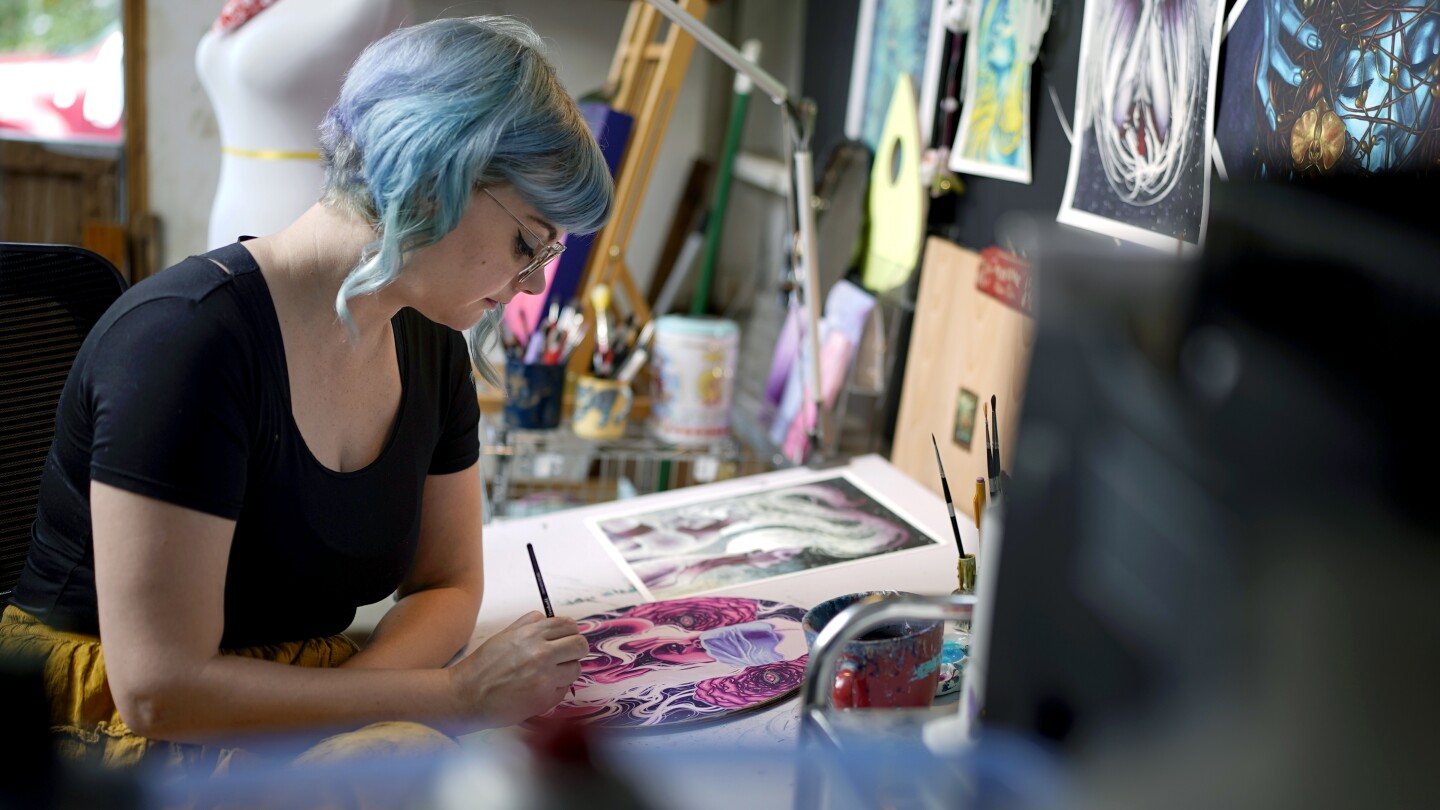- cross-posted to:
- tech@kbin.social
- cross-posted to:
- tech@kbin.social
Visual artists fight back against AI companies for repurposing their work::Three visual artists are suing artificial intelligence image-generators to protect their copyrights and careers.



artist here. nobody is thinking about AI as a tool being used… by artists.
the pareidolia aspect of diffusion specifically does a great job of mimicking the way artists conceptualize an image. it’s not 1 to 1, but to say the models are stealing from the data they were trained on is definitely as silly as claiming an artist was stealing every time they admired or incorporated aspects of other people’s art into their own.
i’m also all for opensource and publicly available models. if independent artists lose that tool, they will be competing with large corps who can buy all the data they need, and hold exclusive proprietary models while independent artists get nothing.
ultimately this tech is leading to a holo-deck style of creation, where you can define you vision through direction and language rather than through hands that you’ve already destroyed practicing linework for decades. or through hunting down the right place for a photograph. or having a beach not wash your sandcastle away with the tide.
there are many aspects to art and creation. A.I. is one more avenue, and it’s a good one. as long as we don’t make it impossible to use without subscribing to the landlords of art tools.
I absolutely approve of AI tools as a way for artists to empower themselves. Because there is human input.
The “best” AI art I’ve seen is the type posted by people who were already drawing before, and are using it as a tool to realise their vision. But that’s the crux of the issue, in these pieces a human conceived the them, the tools used to realize them, don’t matter.
But a lot of people are presenting AI as a something that replaces the whole person of an artist. Not a new brush for them to wield in creatively intelligent ways.
Why does that “fix it” for you? Earlier you stated that AI cannot create anything new by its very nature. Why does the status of the output change if an artist uses it? Why is it art when an artist does it, but not if a non-artist does it?
I’m not talking about “artists” who fiddle with prompts until they got something pretty and then treat the result as a finished piece.
I’m talking about people generate a nose, a hand, a set of abs, a piece of clothing, a texture for a set of clothing, and then combine these with their “traditional” digital art skills.
They are using the AI like a brush, not a printer.
And why is only that “art”? Why is it not art when I use in-painting to generate individual parts of the image? Where is the magical border where it turns from not-art to art?
The magical border is whether it originated in a human mind. What tools were used to get it out and into world don’t matter.
A lot of AI content out there right now, isn’t the result of that process. The AI generated something the artist liked, rather than the artist bending the AI into realising what they could already see in their mind.
So if I enter a prompt and click “generate” it clearly originated in my mind, and it’s art.
No.
Interesting that you don’t explain why, as it satisfies your earlier statement.
I often see the sentiment that AI art is only valid when it is created by people who were already drawing before. It’s a pernicious notion I don’t agree with at all. I think this is the birth of a new and exciting form of expression that can and should be explored by anyone, regardless of any experience or skill level.
Generative art allows more people to communicate with others in ways they couldn’t before, and to inspire and be inspired by others. The stuff people post online isn’t just a matter of pressing a button and getting a random result. It requires creativity, curiosity, experimentation, and refinement. It also requires learning how to use new skills they may not have had to effectively use new tools that are rapidly evolving and improving to express themselves. Generative art is not a passive process, but an active one, where human artists get a chance to create something unique and meaningful.
I believe that generative art, warts and all, is a vital new form of art that is shaking things up, challenging preconceptions, and getting people angry - just like art should. And if you see someone post some malformed monstrosity somewhere, cut them some slack, they’re just learning.